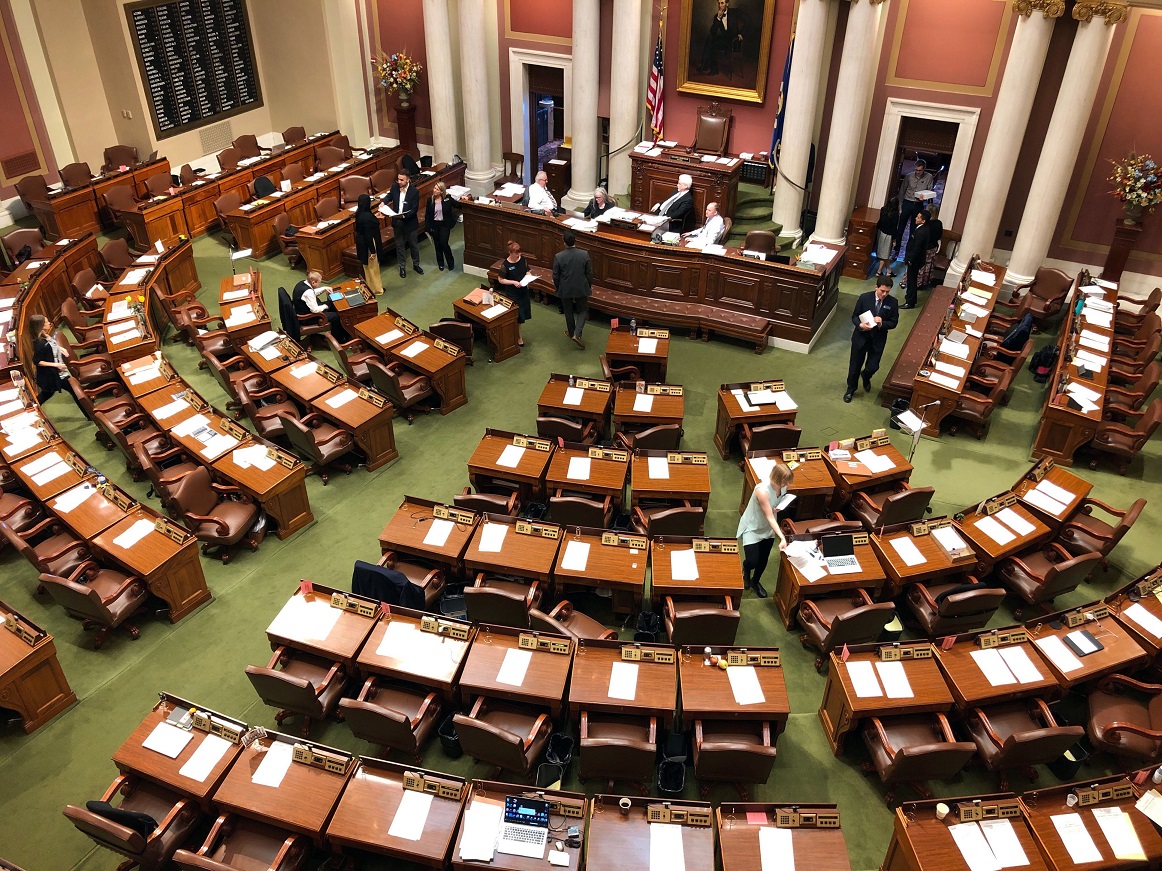Minnesota
Exodus of incumbents brings change to state legislatures

More than one-quarter of state lawmakers whose seats are up for election across the U.S. are guaranteed to be gone from office next year — a statistic certain to grow when the votes are counted from the November general election.
A combination of retirements, term limits, redistricting changes and primary defeats — especially among Republicans facing conservative challengers — already has driven turnover in state capitols to its highest rate in more than a decade.
More incumbents will lose Tuesday, as voters decide nearly 6,300 state legislative races in 46 states.
“There are going to be a lot of new faces in legislative chambers across the country,” said Ben Williams, principal for the elections and redistricting program at the National Conference of State Legislatures.
The changing composition of state legislatures could have significant implications for public policy. Though the federal government often garners more attention, state legislatures hold the power to ban or allow abortion, set rules for future elections, raise or reduce various taxes and determine what gets taught in public schools, among other things.
This election is the first since districts were redrawn to account for population shifts noted by the 2020 census. Post-redistricting elections often see an uptick in retirements and defeats as incumbents opt against running in new areas or get matched up against each other.
But this year’s turnover rate — already above 26% — is ahead of the pace from the last post-redistricting election in 2012 and more than one-quarter higher than the average over the past decade, according to an Associated Press analysis of data from the election tracking organization Ballotpedia.
One reason is that a greater percentage of incumbents didn’t seek re-election this year. But that alone doesn’t explain it.
While the rate of Democratic primary losses declined slightly from 2012, the loss rate for Republican incumbents rose from 4.7% a decade ago to 6.2% this year. Many of those GOP lawmakers lost to challengers aligned with former President Donald Trump and portray themselves as more conservative on such issues as election integrity, transgender policies and school instruction.
Heading into the general election, Republicans held majorities in both legislative chambers in 30 states compared with 17 for Democrats. Two states — Minnesota and Virginia — had split legislative majorities. Nebraska’s Legislature is officially nonpartisan.
When including governors, Republicans had full control in 23 states and Democrats in 14, with the others divided.
History suggests this should be a good year for Republicans. That’s because the president’s party — in this case, the Democrats — typically suffers a backlash of disapproval during midterm elections, losing legislative seats. The public mood appears sour again this year. The percentage of people concerned about their financial wellbeing has risen, and just 25% say the country is headed in the right direction, according to an October poll by The Associated Press-NORC Center for Public Affairs Research.
“The top concern for voters overwhelmingly is the economy and cost of living,” said Andrew Romeo, communications director for the Republican State Leadership Committee, which supports state legislative candidates.
But a summer U.S. Supreme Court decision overturning the national right to abortion — and leaving such decisions to states — added a twist to election-year politics and provided a new campaign angle for Democrats.
Abortion is front and center in Michigan, one of the nation’s biggest legislative battlegrounds.
Democrats hope a Michigan ballot proposal making abortion a constitutional right will drive left-leaning voters to also cast ballots in key legislative races. New state House and Senate districts, drawn for the first time by an independent citizens commission, give Democrats a greater shot than the former districts drawn by the Republican-led Legislature.
The new Senate District 35, for example, takes in parts of several previous districts, extending eastward from Midland to Saginaw Bay. Democrats have run ads asserting the Republican candidate, state Rep. Annette Glenn, “wants to ban abortion, even in cases of rape or incest.” Republican ads pair Democratic candidate Kristen McDonald Rivet with Biden while denouncing “reckless spending and out-of-control inflation.”
Which message compels more turnout than the other remains to be seen.
“I think the big question is what will the composition of the electorate look like,” said Jessica Post, president of the national Democratic Legislative Campaign Committee.
Another state targeted by both Democrats and Republicans is Minnesota, where Republicans hold a slim Senate majority and Democrats a narrow House majority. Each party wants to win full control of the Legislature.
Republicans also are attempting to flip Democratic-led legislative chambers in Colorado, Maine, Nevada and Oregon.
Democrats hope the New Hampshire Legislature, which frequently flips control, could turn their way this year. Democrats also are trying to make legislative gains in Arizona and Pennsylvania, two states that are pivotal in presidential elections.
Democratic- and Republican-aligned groups have collectively poured a couple hundred million dollars into legislative races in what’s become a costly biennial battle for power. Yet both parties are downplaying their potential for sweeping victories.
“If we’re able to preserve and hold the number of chambers that Democrats have right now, that would be a good night,” Post said.
Speaking for Republicans, Romeo also described a good outcome as “keeping everything we have.” He added: “A great night would be if we are able to expand and flip a chamber in one of these Democrat-held states.”

